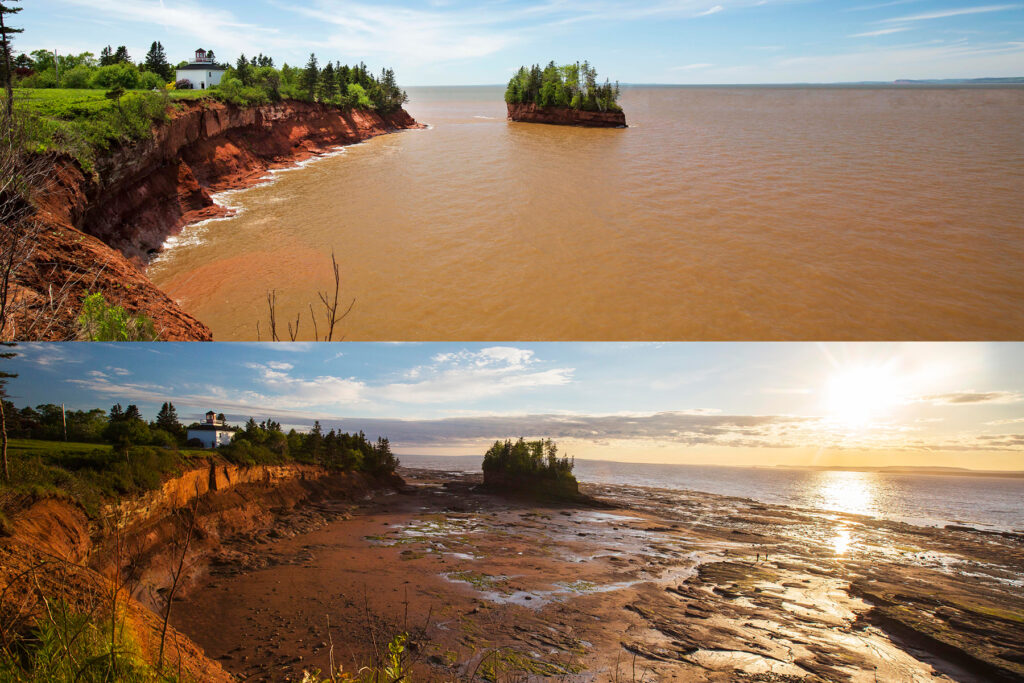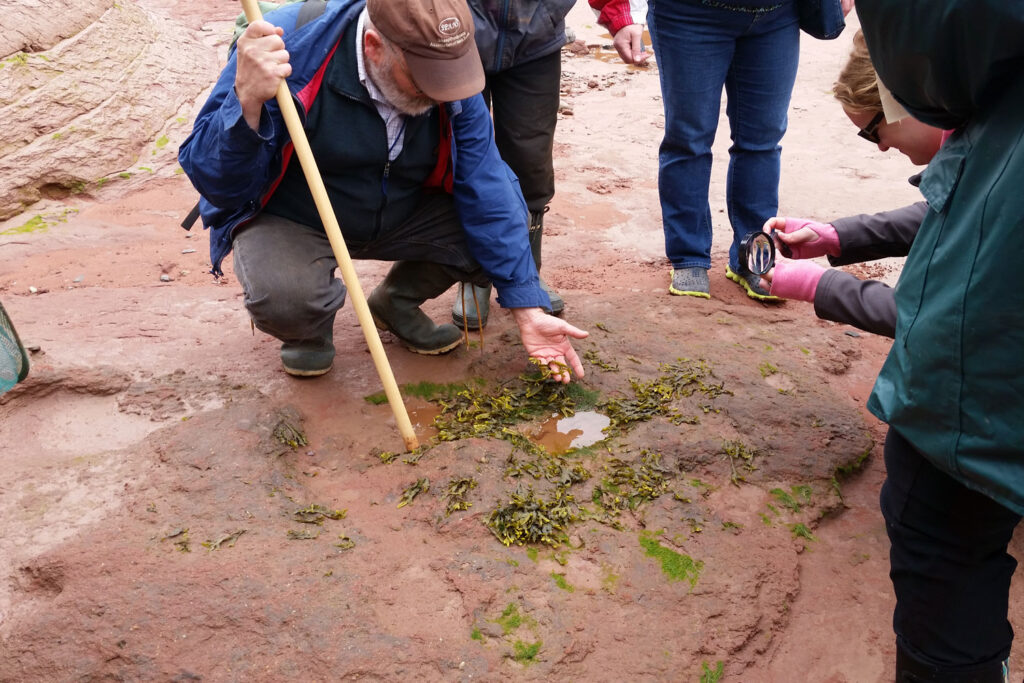Burntcoat Head Park offers a can’t miss experience on the ocean floor. This is the exact location where the world’s highest tides were measured for the Guinness Book of World Records! Before your visit, be sure to check the tide schedule for your safety.
To fully experience the breathtaking power of the Bay of Fundy, you’ll want to experience both low and high tide. Pass the six hours between tides enjoying our short walking trails, picnic areas, and interpretive displays, then exploring attractions of the local community – from museums and art galleries to world-famous tidal bore rafting.
This area can be muddy, so we recommend sturdy footwear that’s washable or waterproof (and you don’t mind getting dirty). The terrain is uneven and slippery (flip-flops and crocs are not recommended). A foot wash is available from mid-May to mid-October.
Our lighthouse gift shop and washrooms are open 9 a.m. to 5 p.m. seven days a week from mid-May to mid-October. Park grounds are accessible after hours and in the off-season at your own risk. The ocean floor should only be accessed in daylight. Make sure you know the tide times. No overnight camping is permitted.
There is ample parking available once you enter the park. RV and bus parking is available in marked locations.
There is a walking path around the park. Part of the path is surfaced in crushed stone and the other in mulch. Getting from the parking lot to the lighthouse is fairly easy although there are some ups and downs in elevation. There are stairs to the ocean floor with railings. From the parking lot to the ocean floor is about a 3-4 minute walk.
Most of our park amenities are available seasonally, mid-May to mid-October during park hours. Plan a day trip, pack a picnic, bring along some yard games, and enjoy your adventure while making use of our park’s features including:


When the tide is out, the creatures left behind are vulnerable. Please be respectful of the ocean life and leave things as they are. Avoid wading in tidal pools or stepping on the colonies of shells found on the ocean floor. What appears to be an empty shell could actually be home to a hermit crab.
Did you know a protected species calls Burntcoat Head Park home? The Atlantic Mud Piddock is an intertidal bivalve mollusc, whose population is limited to the Minas Basin area of the Bay of Fundy, with the most accessible and stable habitat being at Burntcoat Head. Help us protect this species by not walking in the Piddock Protection Area (to the left of the stairs when you enter the ocean floor). Learn more about this endangered species, and its recovery strategy, from the Government of Canada. Please follow warning signs on site during your visit.
Fossils are evidence of ancient life. Important fossils have been discovered at Burntcoat Head Park, including the skull of a strange, beaked archosaur called Teraterpeton and the backbone of a huge, lumbering dicynodont, creatures that lived and competed with the early dinosaurs.
It is illegal to collect fossils without a Heritage Research Permit. If you don’t have a permit, please leave the fossils in place. If you believe you have discovered a fossil, we encourage you to take a photo, note the location, contact the Fundy Geological Museum so it can be identified, and tell us too!
